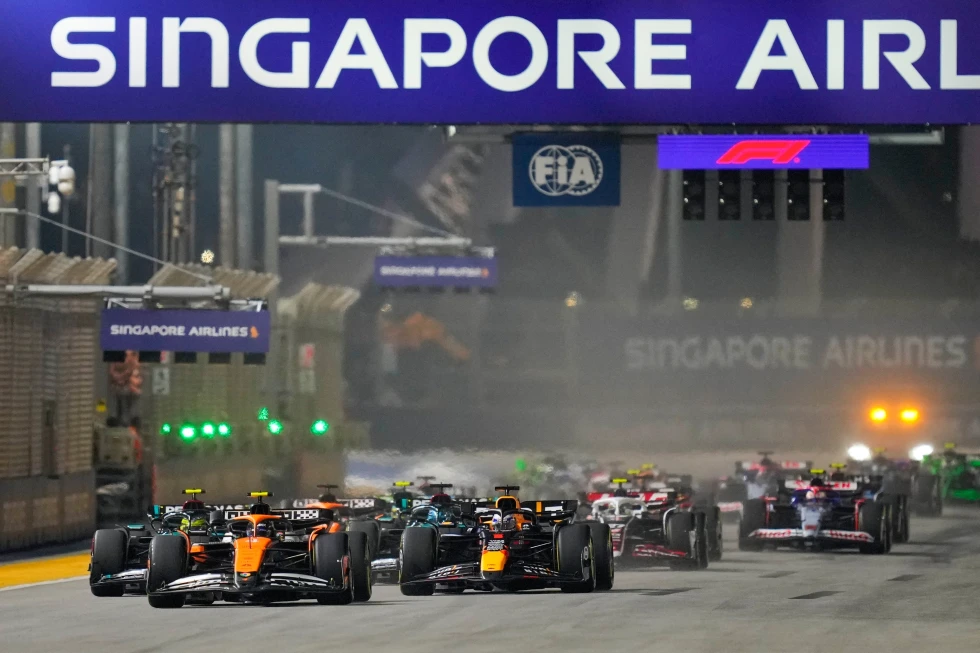h eat Hazard Declared at Singapore GP 2025: F1 Drivers to Use Cooling Equipment
The Singapore Grand Prix 2025 has officially been declared a “heat hazard,” marking the first time Formula 1 has applied this rule. Race officials have mandated that all cars carry cooling equipment to help drivers cope with extreme temperatures on the city’s challenging street circuit. The announcement highlights the FIA’s ongoing focus on driver safety in high-temperature conditions.
Singapore GP 2025: Extreme Heat on the Track
Race director Rui Marques announced the heat hazard on Thursday, citing forecasted temperatures above 31°C (88°F) during the race weekend. According to F1’s official weather forecast, Saturday will reach 32°C, with Sunday rising to 33°C. Singapore is known for its high humidity and intense night-time racing conditions, which makes it one of the toughest circuits on the Formula 1 calendar.
Why Singapore’s Heat Is Dangerous for Drivers
Despite being a night race, the Singapore GP has a reputation for extreme heat and humidity, which puts tremendous physical strain on drivers. In past events, drivers have described in-car drinking water as being uncomfortably warm—sometimes likened to hot tea. Extreme heat can reduce driver focus, reaction times, and overall performance, making additional cooling measures essential for safety and competitiveness.
FIA Introduces Cooling Equipment for 2025
The FIA has introduced **driver cooling vests** under new 2025 regulations. These vests circulate fluid through a network of tubes to help regulate body temperature inside the cockpit. Drivers are not required to wear the vest during the race, but all cars must be fitted with **cooling equipment**, and ballast is added if the vest is not used, ensuring no competitive advantage is gained by leaving it out.
How the Cooling System Works
The cooling vest system works by pumping fluid around tubes embedded in the vest, which absorbs excess body heat and keeps drivers comfortable under extreme conditions. The FIA has emphasized that this technology is critical for both **driver safety** and **performance**, especially in races with high ambient temperatures like Singapore and Qatar.
Learning from Past Races
The FIA began developing cooling technologies after the **2023 Qatar Grand Prix**, where several drivers required medical attention due to heat stress. Implementing these measures in Singapore reflects a proactive approach to preventing similar incidents. By mandating cooling equipment, the FIA ensures that drivers can maintain peak performance without risking their health.
Impact on Race Strategy and Safety
Cooling equipment can influence race strategy, as managing driver comfort is now part of overall performance planning. Teams must ensure the system works efficiently without affecting car weight or handling. While drivers may opt not to wear the vest, the mandatory in-car cooling system ensures everyone competes under similar safety conditions.
Key Takeaways
- The 2025 Singapore GP is the first race declared a heat hazard.
- FIA mandates cooling systems in all cars, with optional driver vests.
- Cooling vests circulate fluid to regulate body temperature.
- Measure implemented following driver heat stress at Qatar GP 2023.
- Helps improve driver safety, performance, and overall race strategy.

















